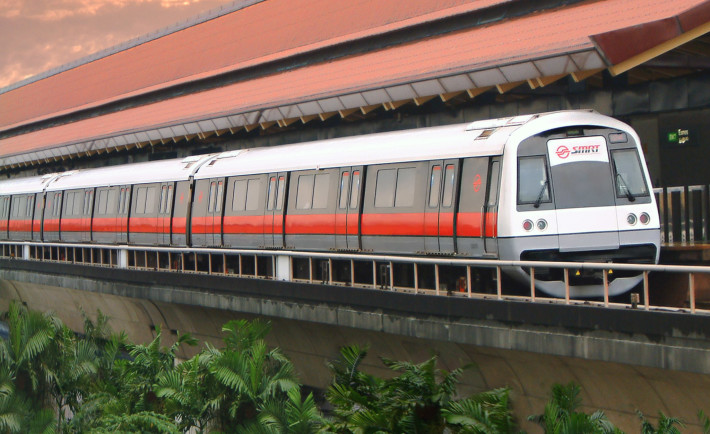Do you know the feeling when walking from the closest MRT station towards your house and it simply takes forever? Driving around the island of Singapore is a true pleasure. One hardly ever encounters a traffic jam and generally gets quickly to any desired place. There isn’t any problem with pollution or a high car density. However, driving and owning a car in Singapore can be a costly undertaking. It is not only the car and its license that is expensive, but also the car insurance can weigh heavy on one’s finances. No matter how much money one has – there isn’t any chance that one can lower the government-imposed charges for the usage of the car. Therefore, it is even more important that one finds a beneficial deal for the car insurance.
The first trick to safe money is the oldest one in the book – drive safely. However, many people are not aware of the system that car insurances around the world use. If one has a car accident, the rate one has to pay monthly or yearly is instantly increased. If you are driving safely around Singapore over a long period of time, your car insurance will remain the same or even shrink slightly. Those people, who tend to crash their car, will not only pay for the reparation, but also for the continuously increasing car insurance. Many car insurances offer a no-claim discount (NCD). This allows for a 10% discount for every year in which you haven’t claimed anything. If you for example have only a minor dent in the car, you may want to consider not claiming it from your insurance, as you can possibly save more with the discount. The NCD can reach a maximum discount of 50%, with which one can safe potentially thousands of hard-earned dollars.
Not only being a safe driver, but also being a law-obeying driver can help you with the insurance. Fancy and fast cars are extremely attractive in Singapore, but even if you have one of those racecars, you are still subject to the speed limits. If you have a clean license over an extended period of time, you can earn a further discount instead of another ticket. After three years driving without committing a traffic offence, you can get the Certificate of Merit (COM), which brings you a further 5% discount on top of NCD. Using all this saved money, one can buy a ticket for the Formula 1 Race in September and enjoy proper racing.
When you are arranging a new car insurance policy, then pay attention to what you actually commit. Many policies often include unnecessary points. Go through them and use your commonsense. It can be that your car insurance also covers you for something that you are already covered for. A personal injury policy within your car insurance is very good, but a total waste of money if your health insurance already takes care of you in the case of an accident. Being covered twice for the same cause will not bring you double money and doesn’t mean you can claim it twice. Furthermore, one should check exactly what policy covers what points. When renting a car, one might be already covered in the case of an accident through another insurance. Different policies might have different names, but cover actually the very same thing. A rental-car insurance might include the same points as a collision policy. Therefore, it is very important, if one wants to save money, to double check the covered points in a insurance. Furthermore, one should eliminate all unnecessary points.
Car and accident statistics aren’t the best friends of young drivers. Unfortunately, an inexperienced young driver has the tendency to crash a car more often than older and more experienced drivers. This results in a higher insurance policy for younger drivers in general. Even if you are driving perfectly, you are paying more by default. Therefore, it is advisable to let your experience on the road be reflected in your policy. If you have been driving for more than ten years without any accident, then you should make a point of it in your new insurance. Not everybody has the possibility to do so, but there is another trick. One can for example insure the car on another person or include a driver with more experience into the policy. Mixing a high risk and a low risk profile will in most cases reduce the insurance. Therefore, one should check who is a low risk profile. Statistically older or female drivers will fall in this category. Listing such as the main driver in one’s car insurance policy, can save some money.
Each car is categorized with a certain amount of insurance money that the owner has to pay. It is generally known that the bigger the engine of the car, the higher is this amount. The reasoning of the car insurance companies is the higher risk. Statistically cars with a higher engine are more likely to crash. For obvious reasons insurances are all about statistics. So if you can beat the statistic, you will save some money. Most people will not modify their car, however there are car enthusiasts that do. A simple engine tweak or any other car modification can quickly become very expensive. What seems like a body shop bargain, can become a killer within the insurance policy. Therefore, it is worthwhile to check with your car insurance whether an upgrade is necessary.
Of course one could say that the insurance company doesn’t have to know. This is however an extremely risky undertaking. In case you do have an accident with your modified car and you haven’t notified your insurance about it, you can loose your cover immediately. Even if you haven’t caused the accident, the insurance company can refuse to pay anything. Hence, one shouldn’t modify outside the regulations of the Land Transport Authority (LTA) and definitely not keep it a secret. Handling your car insurance correctly doesn’t take too long and can award you with some extra cash.








